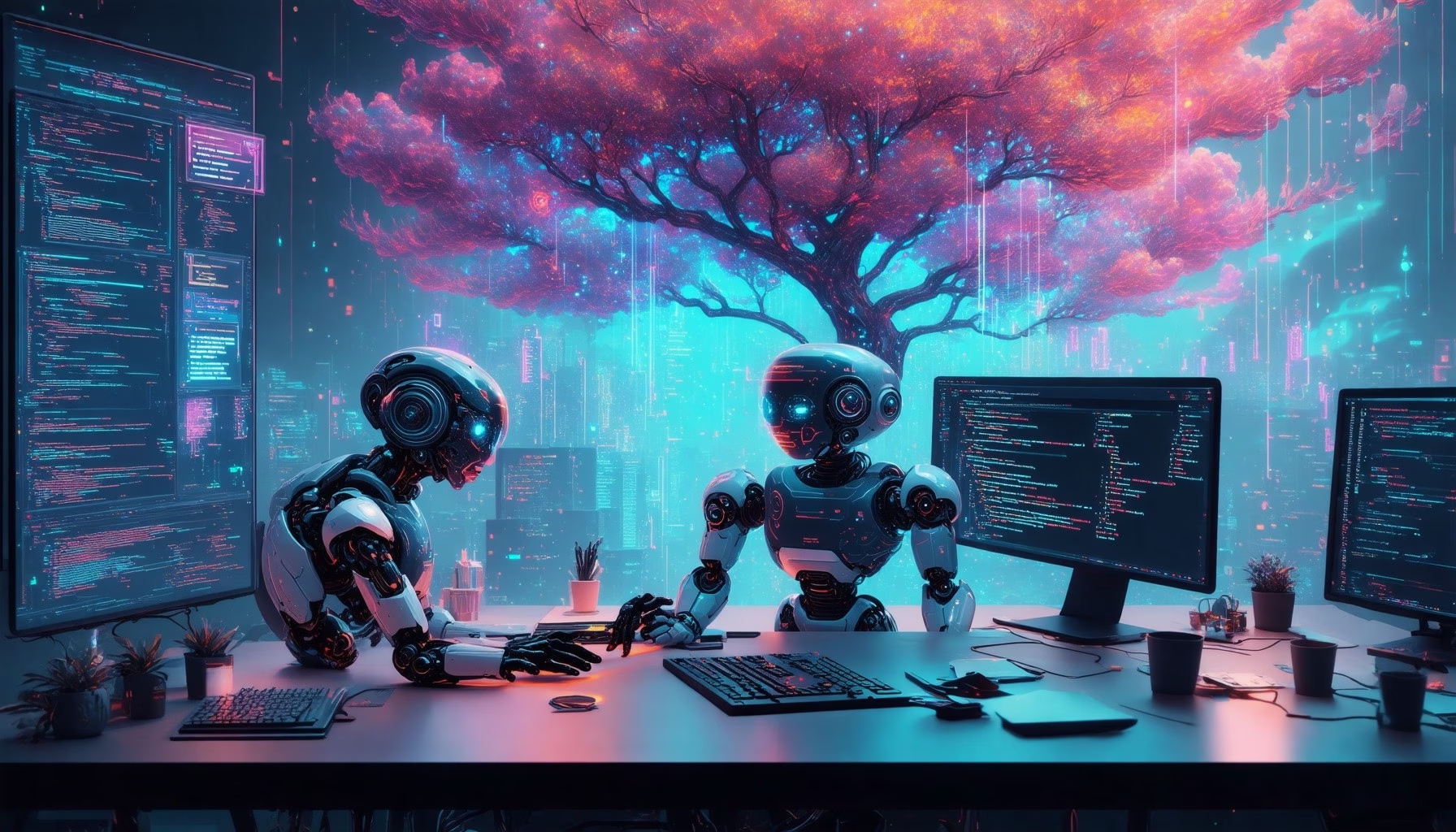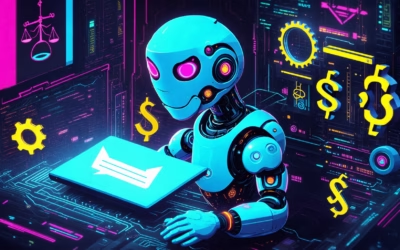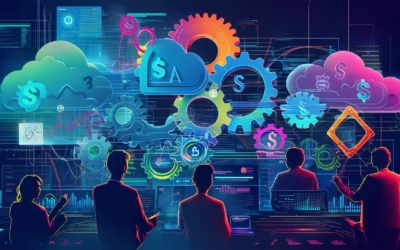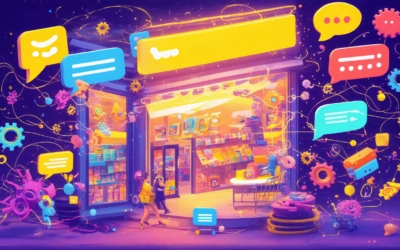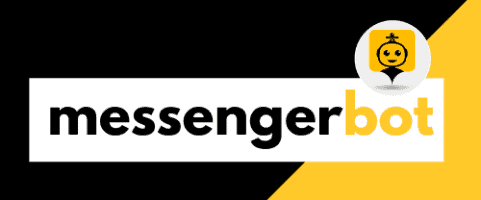Key Takeaways
- Understanding the role of a bot developer is crucial for success in the rapidly evolving field of bot development.
- Proficiency in programming languages like Python and JavaScript, along with knowledge of natural language processing (NLP), is essential for creating effective bots.
- Average salaries for bot developers vary significantly, with entry-level positions starting around INR 4,00,000, and experienced developers earning up to INR 15,00,000 or more.
- Utilizing popular bot development frameworks such as Microsoft Bot Framework and Rasa can streamline the bot creation process.
- Legal considerations and ethical guidelines are vital to ensure compliance and avoid potential pitfalls in bot development.
In today’s digital landscape, bot development has emerged as a pivotal area of expertise, transforming how businesses interact with their customers and streamline operations. This article, titled Navigating the World of Bot Development: Understanding Roles, Salaries, Tools, and Legalities, will delve into the multifaceted world of bots, starting with an exploration of what a bot developer does and the essential skills required for success in this field. We will also provide insights into bot developer salaries, examining the factors that influence earnings across various industries. As we progress, we will uncover the intricacies of bot programming, highlighting popular languages such as Python and the tools that facilitate effective bot development. Furthermore, we will guide you through the steps to becoming a bot developer, including recommended courses and portfolio-building strategies. Lastly, we will address the legalities surrounding bot development, ensuring you are well-informed about the ethical considerations and common legal issues. Join us as we navigate this exciting domain, equipping you with the knowledge to thrive in the world of bot development.
What is a bot developer?
Understanding the Role of a Bot Developer
A bot developer is a specialized software engineer focused on creating, maintaining, and optimizing bots, particularly chatbots that interact with users through natural language processing (NLP). These developers leverage various programming languages and frameworks to build bots that can understand and respond to human language nuances, context, and intent.
Key Responsibilities in Bot Development
Key responsibilities of a bot developer include:
- Designing Conversational Flows: Crafting user interactions that feel natural and intuitive, ensuring that the bot can handle a wide range of queries and scenarios.
- Implementing NLP Techniques: Utilizing machine learning algorithms and NLP libraries (such as Google’s Dialogflow or Microsoft’s Bot Framework) to enhance the bot’s understanding of user input.
- Integrating APIs: Connecting the bot to external services and databases to provide real-time information and functionalities, such as booking systems or customer support.
- Testing and Iteration: Continuously testing the bot’s performance, gathering user feedback, and making necessary adjustments to improve accuracy and user satisfaction.
- Deployment and Maintenance: Launching the bot on various platforms (like websites, messaging apps, or social media) and ensuring it remains functional and updated with the latest features.
Bot developers play a crucial role in the growing field of conversational AI, where tools like Messenger Bot are increasingly used for customer engagement and support. According to a report by Gartner, by 2025, 75% of customer service interactions will be powered by AI, highlighting the importance of skilled bot developers in this evolving landscape (Gartner, 2021).
Skills Required for Bot Development
To excel in bot development, several key skills are essential:
- Proficiency in Programming Languages: Familiarity with languages such as Python, JavaScript, or Java is crucial for building effective bots.
- Understanding of NLP: Knowledge of natural language processing techniques and tools is vital for creating bots that can understand and respond to user queries accurately.
- Experience with Bot Development Frameworks: Familiarity with frameworks like Microsoft Bot Framework or Rasa can significantly enhance a developer’s ability to create robust bots.
- Problem-Solving Skills: The ability to troubleshoot issues and optimize bot performance is essential for maintaining user satisfaction.
- Collaboration and Communication: Working with cross-functional teams, including designers and product managers, is important for delivering a cohesive user experience.
By mastering these skills, a bot developer can effectively contribute to the development of innovative bot solutions that enhance user engagement and streamline communication processes.
What is a Bot Developer?
A bot developer is a specialized software engineer focused on creating and maintaining bots that automate tasks and enhance user interactions across various platforms. This role has gained prominence as businesses increasingly rely on automation to improve efficiency and user engagement. Understanding the role of a bot developer is crucial for anyone interested in the rapidly evolving field of bot development.
Understanding the Role of a Bot Developer
Bot developers are responsible for designing, coding, and deploying bots that can perform a variety of functions, from customer service automation to complex data processing. Their work involves not only programming but also understanding user needs and ensuring that the bots provide meaningful interactions. This role is pivotal in industries such as e-commerce, healthcare, and customer service, where bots can significantly enhance operational efficiency.
Key Responsibilities in Bot Development
- Designing Bot Architecture: Bot developers create the underlying structure of the bot, ensuring it can handle user requests effectively.
- Programming and Integration: They utilize various bot development tools and frameworks to program bots, integrating them with existing systems.
- Testing and Optimization: Continuous testing is essential to refine bot performance, ensuring it meets user expectations and operates smoothly.
- Monitoring and Maintenance: Post-deployment, developers monitor bot interactions and make necessary adjustments to improve functionality.
Skills Required for Bot Development
To excel in bot development, a developer must possess a diverse skill set. Key skills include:
- Proficiency in Programming Languages: Knowledge of languages such as Python, JavaScript, and others is essential for writing effective bot code.
- Understanding of AI and Machine Learning: Familiarity with AI concepts enhances a developer’s ability to create intelligent bots that can learn from user interactions.
- Experience with Bot Development Frameworks: Familiarity with platforms like Microsoft Bot Framework or Google Dialogflow is crucial for building robust bots.
- Problem-Solving Skills: The ability to troubleshoot and resolve issues quickly is vital in maintaining bot performance.
What is the Salary of a Bot Developer?
The salary of a bot developer can vary significantly based on factors such as location, experience, and the specific technologies they work with. As of 2025, the average salary for a chatbot developer in India ranges from INR 6,00,000 to INR 12,00,000 per year, depending on their skill set and the complexity of the projects they handle.
Bot Developer Salary Insights
Understanding the salary landscape for bot developers can help aspiring professionals gauge their potential earnings in this field. Here’s a breakdown of the salary ranges based on experience:
- Entry-Level Salaries: Fresh graduates or those with less than two years of experience can expect to earn between INR 4,00,000 and INR 6,00,000 annually.
- Mid-Level Salaries: Developers with two to five years of experience typically earn between INR 6,00,000 and INR 10,00,000 per year.
- Senior-Level Salaries: Experienced developers with over five years of experience can command salaries ranging from INR 10,00,000 to INR 15,00,000 or more, especially if they possess expertise in advanced technologies such as natural language processing (NLP) and machine learning.
- Freelance Opportunities: Freelance bot developers can charge hourly rates ranging from INR 1,000 to INR 3,000, depending on their expertise and the project’s complexity.
Factors Influencing Bot Developer Salaries
Several factors can impact the salary of a bot developer:
- Industry Demand: The demand for chatbot developers is increasing, particularly in sectors like e-commerce, customer service, and healthcare, where businesses are leveraging chatbots to enhance user engagement and streamline operations.
- Skills Impacting Salary: Proficiency in programming languages such as Python, JavaScript, and familiarity with platforms like Microsoft Bot Framework or Google Dialogflow can significantly influence salary potential.
For more detailed insights, refer to industry reports and salary surveys from platforms like AmbitionBox and Glassdoor, which provide updated salary trends and insights into the chatbot development field.
What is Bot Programming?
Bot programming refers to the process of creating software applications, known as bots, that can automate tasks and interact with users or systems without human intervention. These bots can be designed for various purposes, including customer service, data retrieval, and social media management. Understanding bot programming is essential for anyone interested in bot development.
Popular Programming Languages for Bot Development
When it comes to bot programming, several programming languages are commonly used:
- Python: Known for its simplicity and readability, Python is a top choice for bot development. It offers libraries like ChatterBot and NLTK, which facilitate natural language processing.
- JavaScript: This language is widely used for web-based bots, especially those that operate within browsers. Its asynchronous capabilities make it ideal for real-time interactions.
- Java: With its robustness and scalability, Java is often used for enterprise-level bot applications that require high performance.
Bot Development in Python: A Comprehensive Overview
Bot development in Python has gained popularity due to its extensive libraries and frameworks that simplify the process. Here are key aspects:
- Frameworks: Tools like Flask and Django can be utilized to create web applications that host bots, while libraries like Rasa provide advanced functionalities for building conversational agents.
- Machine Learning Integration: Python’s compatibility with machine learning libraries such as TensorFlow and Scikit-learn allows developers to create bots that learn from user interactions, enhancing their responses over time.
- APIs and Integration: Python makes it easy to integrate with various APIs, enabling bots to access external data sources. For instance, a bot can pull weather data from an API to provide real-time updates to users.
Steps to Becoming a Bot Developer
Becoming a bot developer is an exciting journey that opens up numerous opportunities in the tech industry. With the rise of automation and AI, understanding bot development is essential for anyone looking to thrive in this field. Here’s a comprehensive step-by-step guide to help you navigate your path to becoming a proficient bot developer.
Recommended Bot Development Courses
- Learn Programming Languages: Master key programming languages essential for chatbot development, including Python, JavaScript, and Java. Python is particularly favored for its simplicity and extensive libraries for AI and machine learning.
- Understand Machine Learning and AI Concepts: Gain a solid foundation in machine learning and artificial intelligence principles. Familiarize yourself with algorithms, data structures, and model training techniques. Resources like “Hands-On Machine Learning with Scikit-Learn, Keras, and TensorFlow” by Aurélien Géron can be beneficial.
- Explore Natural Language Processing (NLP): Dive into NLP, which is crucial for enabling chatbots to understand and respond to human language. Study libraries such as NLTK and spaCy, and consider online courses like those offered by Coursera or edX on NLP.
- Familiarize Yourself with Chatbot Frameworks: Get hands-on experience with popular chatbot frameworks such as Rasa, Dialogflow, and the Microsoft Bot Framework. These platforms provide tools and resources to streamline the development process.
Building a Portfolio in Bot Development
Building a strong portfolio is vital for showcasing your skills and attracting potential employers or clients. Here are some effective strategies:
- Develop Personal Projects: Start creating your own chatbots using platforms like Messenger Bot. This practical experience will not only enhance your skills but also provide tangible examples of your work.
- Contribute to Open Source: Engage with open-source projects related to bot development. This will help you gain experience, learn from others, and demonstrate your commitment to the field.
- Document Your Work: Maintain a blog or a GitHub repository where you document your projects, challenges faced, and solutions implemented. This not only showcases your technical skills but also your problem-solving abilities.
- Network with Other Developers: Join developer communities on platforms like GitHub, Stack Overflow, and Reddit. Networking can lead to collaboration opportunities and valuable insights into best practices.
Real-World Examples of Bots
When exploring bot development, it’s essential to understand the various applications that showcase the technology’s capabilities. One prominent example of a bot is a chatbot, which is a software application designed to simulate human conversation through text or voice interactions. Chatbots are commonly used in customer service, providing instant responses to user inquiries and assisting with tasks such as booking appointments or answering frequently asked questions. A well-known instance is the Messenger Bot, which operates within Facebook Messenger. This bot allows businesses to engage with customers directly on the platform, offering personalized responses and facilitating transactions.
According to a report by Business Insider, the use of chatbots in messaging apps is projected to reach 1.4 billion users by 2023, highlighting their growing importance in digital communication. Chatbots utilize artificial intelligence (AI) and natural language processing (NLP) to understand user intent and provide relevant information. Recent advancements in AI have enabled chatbots to learn from interactions, improving their accuracy and effectiveness over time. For instance, a study published in the Journal of Artificial Intelligence Research indicates that AI-driven chatbots can enhance user satisfaction by providing timely and relevant responses.
In summary, bots like chatbots, particularly Messenger Bots, exemplify how technology can streamline communication and improve customer engagement in various industries.
Chatbot Development: Use Cases and Applications
Chatbot development has become a vital aspect of many businesses, providing a range of use cases that enhance customer interaction and operational efficiency. Here are some key applications:
- Customer Support: Chatbots can handle common inquiries, reducing the workload on human agents and providing 24/7 assistance.
- Lead Generation: By engaging users in conversation, chatbots can collect valuable information and qualify leads for sales teams.
- E-Commerce: Bots can assist customers in browsing products, making purchases, and recovering abandoned carts, significantly improving the shopping experience.
- Feedback Collection: Chatbots can automate the process of gathering customer feedback, helping businesses improve their services based on real-time data.
These applications demonstrate the versatility of bot development and its potential to transform how businesses interact with their customers.
Discord Bot Development: Engaging Communities
Another exciting area of bot development is Discord bot development, which focuses on creating bots for the popular communication platform. Discord bots can enhance community engagement through various functionalities:
- Moderation: Bots can automatically manage server rules, filter inappropriate content, and maintain a positive environment.
- Games and Fun: Many Discord bots offer games, quizzes, and entertainment features that keep users engaged and entertained.
- Notifications: Bots can send alerts for events, updates, or announcements, ensuring community members stay informed.
- Integration: Bots can connect with other platforms, allowing users to access information or services directly within Discord.
By leveraging bot development tools and frameworks, developers can create innovative Discord bots that enhance user experience and foster community growth.
The Bot Development Process
Navigating the bot development life cycle is essential for creating effective and efficient bots. Understanding each stage helps ensure that the final product meets user needs and business objectives. Here’s a breakdown of the key stages involved in bot development.
Stages of Bot Development: From Concept to Deployment
The bot development life cycle consists of several critical stages:
- Planning and Research: This initial phase involves defining the bot’s purpose, target audience, and key functionalities. Researching existing bot development tools and frameworks can provide insights into best practices.
- Design: In this stage, the bot’s user interface and conversation flow are designed. Creating a user-friendly experience is crucial for engagement.
- Development: This is where the actual coding takes place. Popular programming languages for bot development include Python, JavaScript, and Ruby. Choosing the right bot development framework is vital for efficient coding.
- Testing: Conducting thorough testing, including bot developmental tests, ensures the bot functions correctly and meets user expectations.
- Deployment: Once testing is complete, the bot is deployed on the chosen bot development platform. This stage may involve integrating the bot with existing systems.
- Monitoring and Maintenance: Post-deployment, continuous monitoring is necessary to address any issues and improve performance based on user feedback.
Best Practices in Bot Development and Testing
Implementing best practices during bot development can significantly enhance the bot’s effectiveness:
- Focus on User Experience: Ensure that the bot provides clear, concise responses and maintains a conversational tone.
- Utilize Analytics: Leverage analytics tools to track user interactions and identify areas for improvement.
- Iterate Based on Feedback: Regularly update the bot based on user feedback and performance metrics to enhance functionality.
- Ensure Compliance: Stay informed about legal considerations, such as the BOTS Act, to avoid potential issues related to bot usage.
The Bot Development Process
Understanding the bot development process is crucial for creating effective and efficient bots that meet user needs. This process involves several stages, each designed to ensure that the final product is functional, user-friendly, and aligned with business objectives.
Stages of Bot Development: From Concept to Deployment
The bot development life cycle typically consists of the following stages:
- Requirement Analysis: This initial stage involves gathering requirements from stakeholders to understand the bot’s purpose, target audience, and desired functionalities. It’s essential to define the bot development meaning clearly to align expectations.
- Design: In this phase, developers create a blueprint for the bot, including its user interface and interaction flow. Choosing the right bot development framework is critical here, as it influences the bot’s capabilities and performance.
- Development: This stage involves coding the bot using appropriate programming languages. For instance, bot development in Python is popular due to its simplicity and extensive libraries.
- Testing: Rigorous testing is essential to identify and fix bugs. A bot developmental test ensures that the bot performs as expected under various scenarios.
- Deployment: Once testing is complete, the bot is deployed on the chosen bot development platform. This stage includes integrating the bot with existing systems and ensuring it operates smoothly in a live environment.
- Maintenance: Post-deployment, ongoing maintenance is necessary to update the bot, fix issues, and improve functionalities based on user feedback.
Best Practices in Bot Development and Testing
To ensure successful bot development, consider the following best practices:
- Define Clear Objectives: Establish specific goals for what the bot should achieve, whether it’s enhancing customer service or automating tasks.
- User-Centric Design: Focus on creating an intuitive user experience. This includes understanding user behavior and preferences, which can be achieved through user testing and feedback.
- Utilize Bot Development Tools: Leverage advanced bot development software and frameworks that streamline the development process and enhance functionality.
- Iterative Testing: Conduct regular testing throughout the development process to catch issues early and ensure the bot meets user expectations.
- Monitor Performance: After deployment, continuously monitor the bot’s performance using analytics to identify areas for improvement and optimize user engagement.

